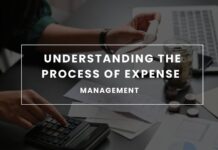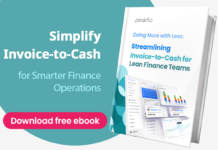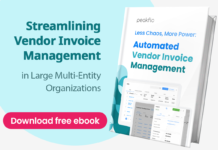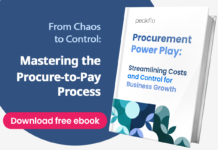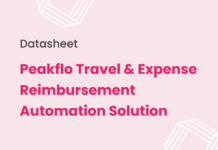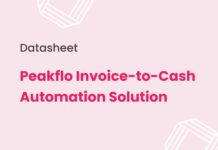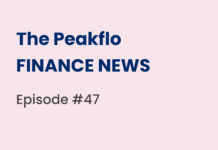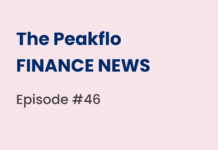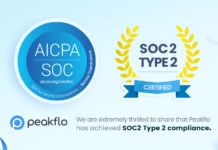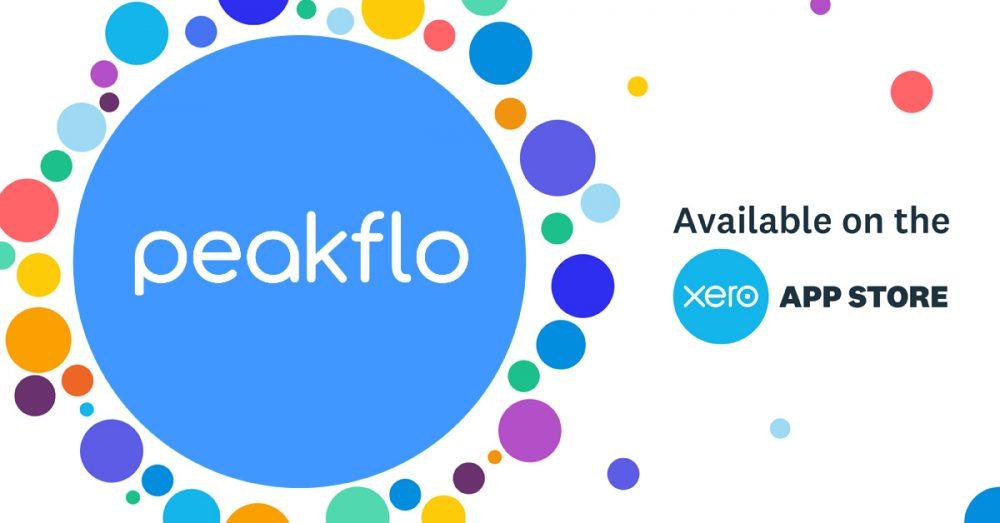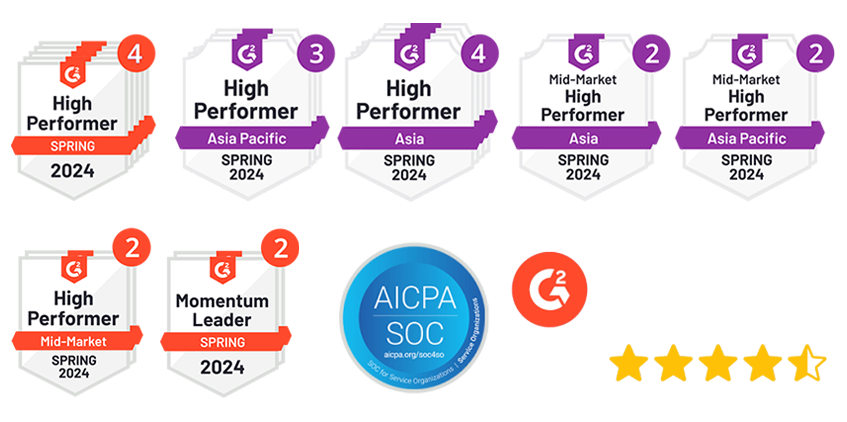If you have ever felt overwhelmed by financial terms like amortization, you are not alone. Whether it is figuring out how to manage loan repayments or how to account for asset depreciation properly, it can be tricky to wrap your head around. But understanding how amortization works is crucial for making smarter business decisions and keeping your finances on track.
Amortization is not as complicated as it sounds. When you break it down, it is simply about spreading costs over time—whether it is paying off a loan or accounting for the wear and tear on an asset. Knowing how to use amortization to your advantage can help you improve cash flow, cut unnecessary costs, and even get some tax benefits.
In this post, we will show you exactly what amortization is, how it impacts your finances, and how you can use it to your benefit.
What is Amortization?
Amortization is simply the process of paying off a debt or spreading out the cost of an asset over a set period. Imagine you have just taken out a business loan or invested in an asset—how do you manage the costs over the long run without it affecting your finances all at once?
That is where amortization comes in.
Here is a simple way to think about it: When you take out a loan, instead of paying it all back in one lump sum, you break the payments into smaller, more manageable chunks over time. Each payment you make covers the interest and the principal (the original loan amount). This helps prevent huge financial hits, especially for large purchases or long-term investments.
For example, your business takes out a $100,000 loan to expand operations. Rather than paying the entire amount back in one go, you agree to an amortization schedule that spreads the loan payments over 5 years. Every month, you pay a fixed amount—part of that goes toward paying off the loan balance, and part goes toward interest. This makes it easier to manage the loan over time without straining your cash flow.
Does that make sense? Instead of worrying about a massive payment all at once, amortization makes the process smoother and more predictable.
The same principle applies when you purchase assets like software licenses or patents. Instead of taking a large expense all at once, you spread the cost out over the asset’s useful life. This helps businesses better manage expenses and ensures that you can keep your cash flow steady.
Types of Amortization
Amortization is not a one-size-fits-all concept. Depending on the nature of your business, loan, or asset, there are different types of amortization that might apply. Let us break down the most common types to give you a clearer picture of how they work:
1. Loan Amortization
When your business borrows money, loan amortization helps you repay it over time. Instead of paying everything at once, you make fixed payments regularly. These payments cover the interest (what you owe for borrowing) and the principal (the original amount you borrowed).
For example, if you take out a $100,000 loan for your business, you pay it back regularly. In the beginning, most of your payments go toward interest, and gradually, more payments go toward the principal. This setup helps businesses avoid big, stressful payments.
2. Intangible Asset Amortization
Some things your business buys, like software or patents, do not have a physical form, but they still hold value. This is where intangible asset amortization comes in. It helps spread out the cost of these assets over the time they are useful.
Suppose your business buys a $50,000 software license for 5 years. Instead of recording the entire $50,000 as an expense all at once, you can write off $10,000 per year. This way, the cost does not hit your finances too hard in one go. It is a smart way to manage your books while keeping your taxes lower.
3. Investment Amortization
Investment amortization helps you handle the costs of things like investment properties or securities. Instead of recognizing the full cost upfront, you spread it over the expected life of the investment. This keeps your business from facing a big financial burden at once.
For example, if you buy a commercial building as an investment, you do not count the entire cost in the first year. Instead, you amortize it over several years, adjusting for things like depreciation. This helps balance your finances and manage your investment in an easier way.
4. Mortgage Amortization
If your business takes out a loan to buy property, like a commercial building, you will use mortgage amortization. With this type, your payments are divided between principal and interest. This makes it easier to pay down the loan over time while also building up equity in the property.
For example, if you take out a $500,000 mortgage for office space, each month you pay a set amount. Some of that money reduces the loan balance (principal), while some goes toward the interest. Over time, your business owns more of the property, which can increase its value.
5. Accelerated Amortization
Sometimes, you may want to write off an asset faster than normal. This is what accelerated amortization allows. It lets your business claim larger deductions in the first few years, which reduces taxable income early on. It works well for assets like equipment or technology that lose value quickly.
For example, if your business buys a $100,000 machine, you might write off more of the cost in the first few years. This gives you bigger tax savings upfront, helping with cash flow. Later on, the deductions get smaller, but the business is already ahead financially.
Methods of Amortization
Amortization is not just about spreading costs but about choosing the right method to manage finances wisely. Your method can impact cash flow, tax deductions, and overall business strategy. Here are the most common approaches and how they work.
1. Straight-Line Amortization
This is the most straightforward method. You divide the total cost of an asset or loan into equal payments over a set period. The same amount is deducted or repaid each period, making financial planning simple.
Because the cost is spread evenly, this method is great for businesses that want predictable expenses. It works well for things like patents, software, and long-term loans, where the value remains steady over time.
2. Declining Balance Amortization
Some assets lose value faster in the early years. That is where declining balance amortization comes in. Instead of spreading costs evenly, it allows for larger deductions upfront and smaller ones later.
Businesses often use this method for machinery, equipment, and technology. It helps reduce taxable income early on, freeing up more cash when needed. However, it is not used for loans—only for assets.
3. Annuity Amortization
This method is common for loan repayments. Payments stay the same each month, but in the beginning, a larger portion goes toward interest, while later payments reduce more of the principal.
Businesses prefer this method for mortgages and long-term loans because it keeps payments consistent. It makes budgeting easier and ensures debt is paid off over time without sudden cost increases.
4. Balloon Amortization
Not all loans are paid off in equal chunks. With balloon amortization, businesses make smaller payments throughout the loan term, but at the end, they must make a large final payment—the “balloon” amount.
This approach is useful when a company expects higher revenue in the future. It allows for lower costs early on, but businesses must plan for the large final payment. It is often used in real estate and short-term financing.
5. Negative Amortization
This is the only method where the balance grows instead of shrinking. Payments are set so low that they do not fully cover interest costs, meaning the unpaid interest is added back to the loan balance.
Businesses rarely use this method unless they are dealing with adjustable-rate loans or specialized financing. It can lead to higher long-term costs, so it requires careful planning.
The right choice depends on your business needs.
- If you want steady, predictable payments, straight-line or annuity amortization is best.
- If tax savings early on matter more, declining balance amortization is a smart move.
- For businesses expecting future growth, balloon amortization can help manage cash flow.
Applications of Amortization
Amortization is not just a financial term—it is something that businesses use to manage their money. Understanding how to apply amortization correctly can make a big difference in keeping your finances on track. Let us explore the top ways amortization is used in the real world.
1. Managing Loan Payments
Amortization is often used to help businesses pay off loans. Instead of paying all the money back at once, businesses use amortization to spread the loan payments over time.
This makes it easier to manage large debts. The payments are predictable, and you won’t have to worry about a huge expense all at once.
For example, if your business takes out a $100,000 loan, amortization allows you to pay it off in smaller chunks over several years. This helps keep your cash flow steady and your business running smoothly.
Have you ever had to pay back a big loan? How would it feel if you could spread out those payments?
2. Spreading the Cost of Intangible Assets
Some things your business buys, like software or patents, do not have a physical form. These things lose value over time, just like equipment does. Amortization helps you spread out the cost of these assets instead of taking the full hit in one year.
For example, if your business buys a $50,000 software license that lasts 5 years, you would not write off all $50,000 at once. Instead, you spread it out and claim $10,000 per year.
This way, the expense does not hurt your finances too much in one go, and you can manage your budget better.
Does your business use any intangible assets like software or patents? How could amortization help with those costs?
3. Real Estate and Property Investments
When businesses buy real estate, like an office or store, it often comes with a mortgage loan. Amortization helps spread the mortgage payments over time.
This makes planning and paying off the loan gradually easier than dealing with a huge amount simultaneously. As the loan gets paid off, the property usually increases in value.
For example, if your business buys a $500,000 property, the loan will be paid off over time. As your business pays it down, you also build equity, meaning you own more property.
Does your business own any real estate? How could amortization help manage mortgage payments?
4. Equipment and Large Purchases
Businesses often need to buy expensive equipment, machinery, or technology. These things lose value over time, so it’s important to spread out the cost through amortization.
For instance, if your business buys a $100,000 machine, instead of recording the full cost in one year, you can spread it out over 10 years. This makes it easier to handle the expense without affecting cash flow too much.
Spreading the cost also makes planning for future repairs or replacements easier.
Does your business rely on equipment like machinery or technology? How could amortization make paying for them easier?
5. Managing Investments
If your business invests in property or other assets, amortization can help spread the cost over several years. This helps manage large investments without causing big problems with cash flow.
For example, if your business buys an investment property, you do not count the full price in the first year. Instead, amortize it over 20 years to spread the cost evenly.
This method helps businesses claim tax deductions and manage long-term assets with a more balanced approach.
Does your business have any investments, like real estate? How could amortization help your finances?
Advantages & Disadvantages of Amortization
Amortization is a helpful tool for spreading out costs. Whether you are paying off a loan or accounting for asset depreciation, it can make your finances easier to manage. But, like anything, it comes with both pros and cons. Let us explore them.
1. Advantages of Amortization
- Better Cash Flow Management
Amortization helps keep your payments steady and predictable. Instead of paying all at once, you make smaller payments over time. This can be a big relief, especially for businesses with big expenses.
By spreading out costs, your cash flow stays steady. You do not have to worry about huge payments that might drain your funds. This makes it easier to manage your money month by month.
- Tax Benefits
Amortization also helps with tax deductions. When you spread the cost of an asset, you can deduct a portion of it every year. This can lower your taxable income, meaning your business pays less in taxes.
For example, if you buy a large software license or a patent, amortization allows you to spread that cost over several years. These smaller deductions can add up and help improve your business’s financial position.
- Easier Financial Planning
When you use amortization, it becomes easier to plan your finances. You know exactly how much you need to pay each month for loans or assets. This helps you avoid surprises and makes budgeting more straightforward.
Amortization brings predictability to your finances, helping you stay on top of payments without the stress of sudden changes or large costs.
- Manageable Loan Repayments
Amortization breaks down large sums for businesses with loans into smaller, more manageable payments. You do not have to pay the full loan amount all at once. Instead, you repay the loan in fixed installments over time.
This makes debt repayment less stressful. The longer-term payments help you stay on track and prevent a sudden financial burden. As you pay off the loan, you also reduce interest, which can be a big win for your business.
2. Disadvantages of Amortization
- High-Interest Costs in the Beginning
One drawback is that you pay more interest in the early years, especially with methods like annuity amortization. Early payments go mostly toward the interest rather than the actual loan balance.
While this will change over time, you are paying more interest early on. This could result in higher costs initially, which can challenge businesses that need quick financial relief.
- Risk of Negative Amortization
In some cases, like with certain adjustable-rate loans, amortization can lead to negative amortization. This happens when payments are too small to cover the interest. As a result, the unpaid interest is added to the loan, increasing your overall debt.
This is a dangerous situation. If you do not manage it carefully, it can lead to much higher debt levels in the future.
- Lack of Flexibility
Once you set an amortization schedule, it can be hard to change it. If your business goes through unexpected changes, like needing extra cash for growth or facing a financial setback, you may be unable to adjust your payment schedule easily.
Some methods, like straight-line amortization, do not offer much flexibility. This could make it harder to react to sudden financial needs.
- Complex for Multiple Assets
Keeping track of the different amortization schedules can get complicated if your business owns different types of assets—like equipment, software, and real estate.
Each asset might have a different amortization period, and managing them requires careful attention. This adds extra paperwork and makes accounting more time-consuming.
Simplify Amortization with Peakflo: A Smart Solution for Your Business
Managing amortization can be a headache, but it does not have to be. With Peakflo, you can make the whole process smoother and faster. Whether handling loan repayments or keeping track of asset depreciation, Peakflo’s AI-powered solution makes amortization easy.
1. Create Amortization Schedules in Minutes
Setting up and tracking amortization payments does not need to be complicated. With Peakflo, your accounts payable (AP) team can select the right amortization template and schedule when they create a bill. All they need to do is enter the start and end dates, and Peakflo will automatically create a detailed schedule for you. No more manual calculations or worrying about missing payments.
2. Seamlessly Connect with NetSuite
Already using NetSuite? Peakflo works perfectly with it. Our integration allows you to access many types of amortization schedules and structures. You can use all the features NetSuite offers, but with the added ease of Peakflo’s automation, making your work even faster and more accurate.
3. Automate Your Accounting and ERP Systems
Think about how much easier it would be if your accounting work were done automatically. With Peakflo, that’s exactly what happens. Once you input your amortization details, Peakflo automatically records the payments in your ERP or accounting system. It creates the journal entries needed to track the expense amortization each month. This means less work for your team and fewer mistakes.
Conclusion
Whether it is paying off loans or spreading out asset expenses, understanding how to apply it can make your business’s financial life a lot smoother.
That is exactly where Peakflo steps in. With easy-to-use tools that help you automate amortization schedules, it’s the simple way to stay on top of your finances.
Ready to see how it works in action?Book a demo tour and discover how Peakflo can streamline your amortization process, so you can focus on growing your business.


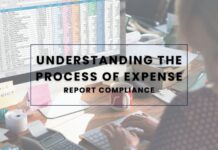


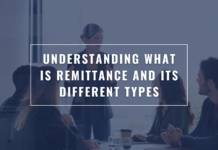




![Why AI Sales Calls Are Making Good Sales Reps Even Better [2025 Guide] ai sales calls](https://blog.peakflo.co/wp-content/uploads/2025/09/65168cf6-3001-4733-8cbc-12d5684cf449-218x150.webp)




